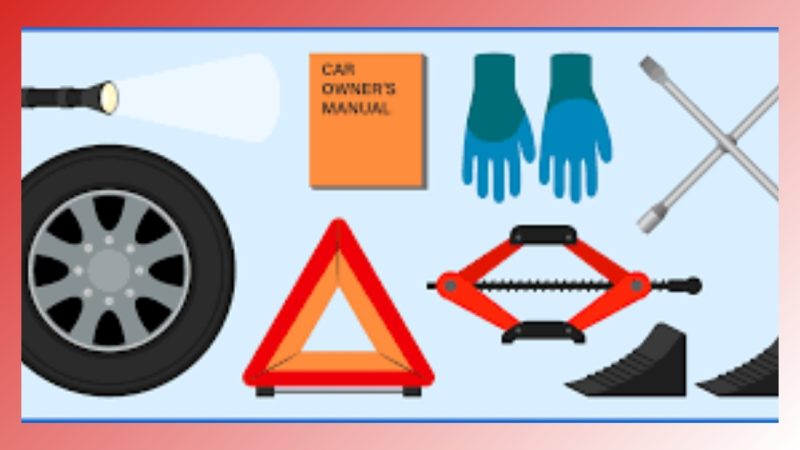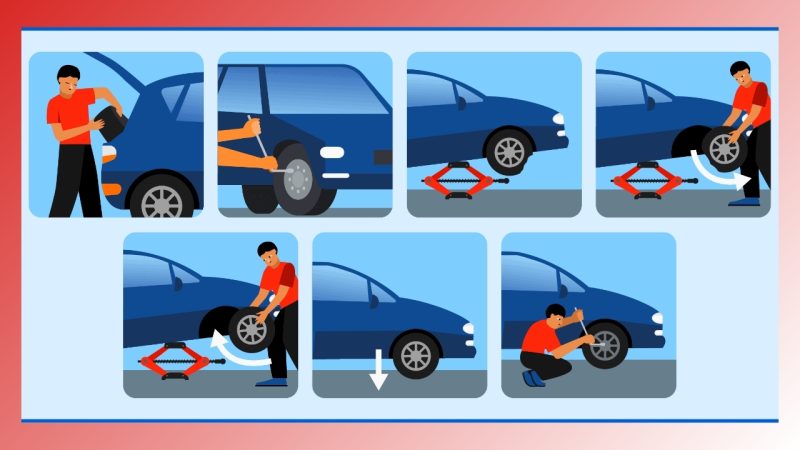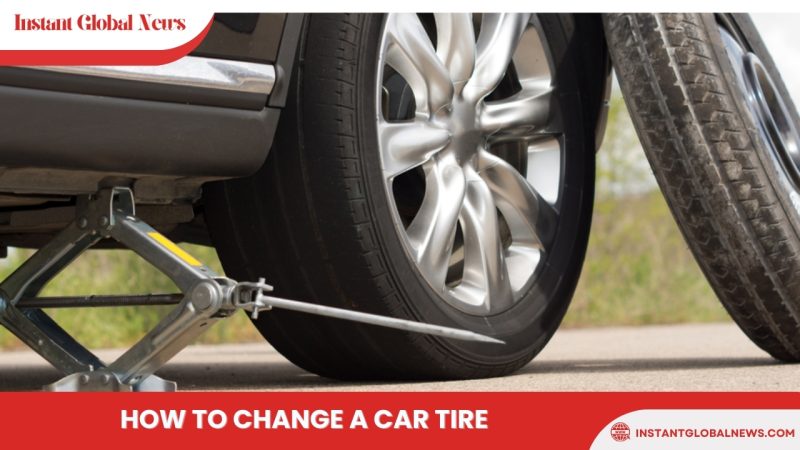Knowing how to change a tire is an essential skill for all drivers. No matter how reliant we are on our cell phones, there’s always a chance that we’ll forget to charge it, be out of range, or leave it at home when an emergency strikes. Flat tires can happen anywhere, and having the knowledge and tools to change a flat tire is invaluable.
Changing a tire may seem daunting at first, but it’s actually a straightforward process. By following a few simple guidelines, you can be well-prepared in case you experience a flat tire. Let’s dive into the details and equip ourselves with this essential skill.
Items You’ll Need to Fix a Flat Tire
Before we delve into the step-by-step process, let’s take a look at the items you’ll need to fix a flat tire. The following items should have come with your vehicle:
- Jack
- Lug wrench
- Fully inflated spare tire
- Vehicle owner’s manual
If you have misplaced any of these items or if your car did not come with them, it’s crucial to purchase new ones right away. Additionally, make sure to regularly check the spare tire’s air pressure, following your vehicle manufacturer’s recommended PSI. Remember to check the spare tire’s pressure every month and before long trips or when carrying an extra load.
In addition to the aforementioned items, here are a few extra items that you should keep in your trunk or glove box in case you need to change a flat tire:
- Flashlight with working batteries
- Rain poncho
- Small piece of 2″x6″ wood to secure the jack
- Gloves
- Wheel wedges
Now that we have the necessary items ready, let’s move on to the step-by-step process of changing a tire.

How to Change a Flat Tire
1. Find a Safe Location
As soon as you notice that you have a flat tire, reduce your speed gradually and scan your surroundings for a safe location to pull over. Look for a level, straight stretch of road with a wide shoulder, or an empty parking lot. Ideally, choose a location with level ground to prevent your vehicle from rolling. Straight stretches of road are also preferable, as oncoming traffic is more likely to notice you.
It’s essential to consult your vehicle owner’s manual to review the specific steps for changing a flat tire in your vehicle.
2. Turn on Your Hazard Lights
To ensure other drivers can see you on the side of the road and avoid accidents, turn on your hazard lights or “flashers” as soon as you realize you need to pull over.
3. Apply the Parking Brake
Always engage the parking brake when preparing to replace a flat tire. This minimizes the possibility of your vehicle rolling.
4. Apply Wheel Wedges
Wheel wedges should be placed in front of or behind the tires to further prevent the vehicle from rolling while you work on fixing the flat tire. If you’re changing a rear tire, place the wheel wedges in front of the front tires. If the flat tire is at the front, put the wheel wedges behind the rear tires.
Bricks or large stones can serve as alternatives to “real” wheel wedges, as long as they are large enough to prevent the car from rolling.
5. Remove the Hubcap or Wheel Cover
If your vehicle has a hubcap covering the lug nuts, it’s easier to remove the hubcap before lifting the vehicle with the jack. Use the flat end of your lug wrench to remove the hubcap. However, keep in mind that some hubcaps may require a different tool for removal. Refer to your vehicle’s owner’s manual for proper hubcap or wheel cover removal procedures.
6. Loosen the Lug Nuts
Using the lug wrench, turn the lug nuts counterclockwise until you break their resistance. You may need to exert force, and that’s perfectly fine. Use your foot or your entire body weight if necessary.
Loosen the lug nuts about ¼ to ½ of a turn, but do not remove them completely at this stage. Save the complete removal for when it’s time to take off the tire/wheel from the vehicle.
7. Place the Jack Under the Vehicle
The right placement for the jack is usually beneath the vehicle frame alongside the flat tire. Many vehicle frames have areas of exposed metal specifically designed for jack placement. Follow the instructions in your vehicle owner’s manual to ensure the jack is correctly positioned without causing any damage to the vehicle.

8. Raise the Vehicle with the Jack
To prevent the jack from settling under the weight of your vehicle and becoming unbalanced, place a small piece of 2×6″ wood beneath it before attempting to raise your vehicle. This is especially useful when working on asphalt.
With the jack properly positioned, raise the vehicle until the flat tire is approximately six inches above the ground.
Never place any part of your body under the vehicle during or after raising it with the jack.
9. Unscrew the Lug Nuts
Now it’s time to remove the lug nuts completely. Since you loosened them earlier, you should be able to unscrew them mostly by hand.
10. Remove the Flat Tire
Gripping the tire by the treads, gently pull it toward you until it is completely free from the hub behind it. Place the flat tire on its side to prevent it from rolling away.
11. Mount the Spare Tire on the Lug Bolts
Align the rim of the spare tire with the lug bolts on the hub. Push the spare tire gently until the lug bolts show through the rim.
12. Tighten the Lug Nuts by Hand
Place the lug nuts back on the lug bolts and tighten them all the way by hand. Once they are all on, check each one again, tightening as much as possible. You will further tighten them with the lug wrench after lowering the vehicle to the ground.
13. Lower the Vehicle and Tighten the Lug Nuts Again
Use the jack to lower the vehicle, allowing the spare tire to touch the ground but without placing the full weight of the vehicle on it. Now, tighten the lug nuts with the lug wrench, turning them clockwise as much as you can. Apply your full body weight when pushing down on the lug wrench.
14. Lower the Vehicle Completely
Lower the vehicle all the way to the ground and remove the jack. Afterward, give the lug nuts another pull with the lug wrench to ensure they are as tight as possible.
15. Replace the Hubcap
If the hubcap you removed from the flat tire fits your spare tire, replace it in the same way you initially removed it. If it doesn’t fit, stow it away with the tire and the rest of the equipment.
16. Stow All Equipment
Before driving away, make sure to put the jack, lug wrench, wheel wedges, flat tire, and any additional equipment back in your vehicle.
17. Check the Pressure in the Spare Tire
To ensure your safety, check the tire pressure of the spare tire. “T-Type” temporary spares, also known as “mini-spares,” require a pressure of 60 psi (420 kPa). If the tire needs inflation, drive cautiously to a service station immediately.
18. Take Your Flat Tire to a Technician
Temporary spare tires are not designed for driving long distances or at high speeds. Drive cautiously until you can visit a tire technician. A professional will assess whether your tire needs repair or replacement.
FAQs
Q: How long does it take to fix a flat tire?
A: Apart from taking your tire to a professional, the process of changing a tire should not take more than 15 to 30 minutes. Just make sure you follow all the steps correctly.
Conclusion
Knowing how to change a flat tire is a valuable skill that every driver should possess. By following the step-by-step instructions outlined in this guide, you’ll be well-prepared for any unexpected flat tire situations. Remember to practice changing a tire in a safe environment to ensure you’re ready when the need arises.
In addition to knowing how to fix a flat tire, it’s crucial to prioritize regular tire maintenance. Keep your tires properly inflated, rotate them according to the manufacturer’s guidelines, and monitor for tread wear. These simple precautions will extend the life of your tires and reduce the likelihood of experiencing a flat tire. Remember, proper care can enhance tire performance and ensure they last as long as possible.
Don’t let a flat tire derail your journey. Stay prepared and keep moving forward with confidence.




